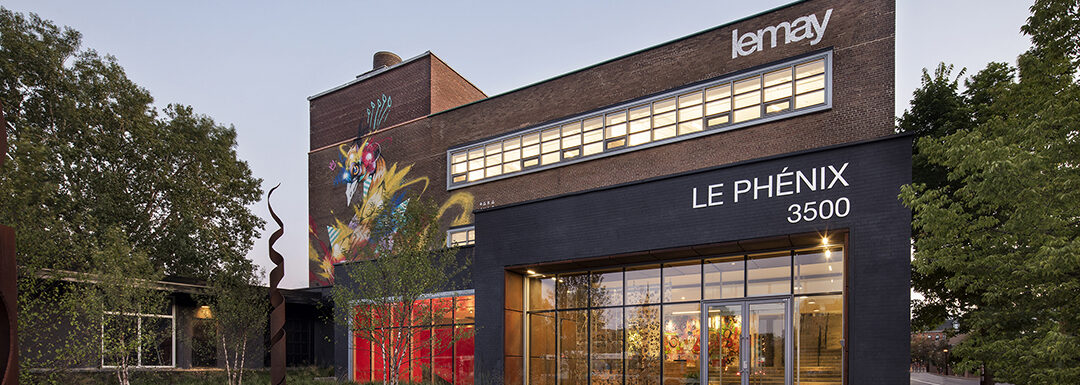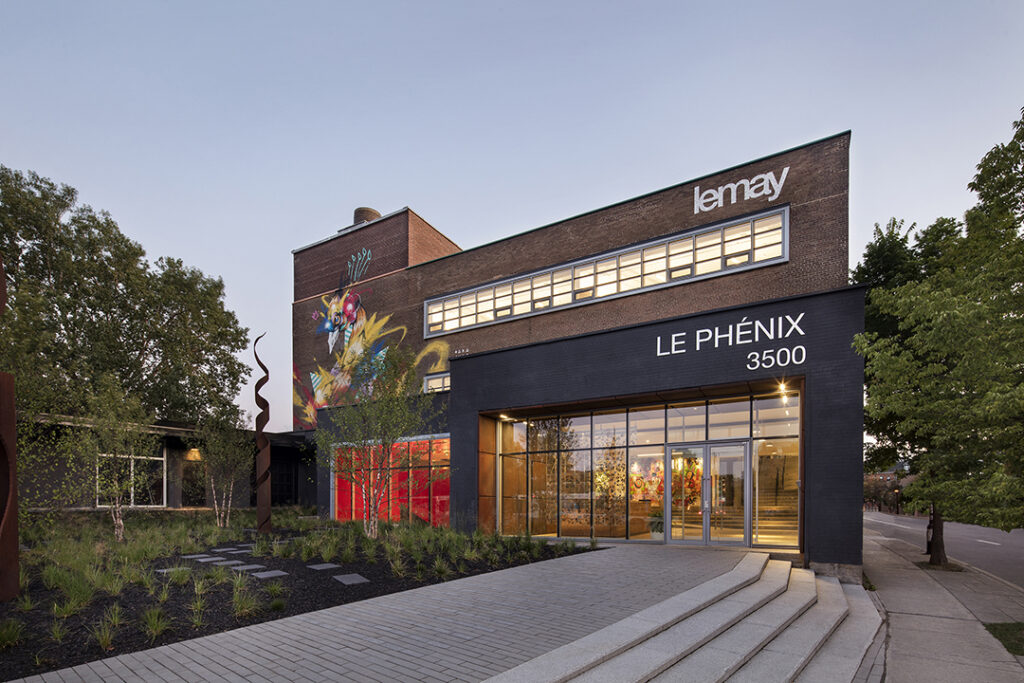The Phenix – Zero Carbon Retrofit

Projects Sponsor
Lemay converts a 1950s-era warehouse into offices and a laboratory for innovations in sustainability and design. The Phenix rises to save 83% of annual energy costs.
Rome wasn’t built in a day, as is often said, and let’s not even talk about the renovations.
Transforming an older structure can be a very challenging process––often requiring more innovation and supplying more unpleasant surprises than starting from scratch––and yet that’s the challenge architectural and design firm Lemay chose to embrace in bringing The Phenix to life.
Rather than designing and constructing a new building for its growing transdisciplinary team in Montreal, Lemay opted to transform a neglected 1950s-era warehouse in Montreal’s up-and-coming South-West borough, where the company has its humble roots.
Crucially, more than just reusing and refreshing the building, Lemay decided to remake it as an experimental laboratory for innovations in sustainability and design. The opportunity to design and test out new concepts and their Net Positive™ approaches in support of the same design excellence and sustainable development they provide to their clients was not one the team could pass up.
Several studies were carried out to not only reduce operating emissions from the finished building through building performance modeling, but also to reduce emissions from the renovation process itself. Other studies included on-site production of renewable energy through photovoltaic and thermal panels. Further research showed that it was possible to renovate a building to be net-zero energy and carbon neutral at the same construction cost compared to a similar building, providing yet more inspiration.

The Phenix’s concept capitalizes on the original massive concrete structure by creating two distinct internal interfaces across three floors: one urban, to the north, and one natural, to the south. The northern “main street” corridor is the main thoroughfare, running along busy Saint-Jacques Street and hosts meeting rooms, washrooms, coffee, and common areas, with integrated furniture for informal meetings, relaxation, and brainstorming.
The building now hosts some three hundred and fifty professionals with a biophilic strategy that goes beyond just plants. The south-side workshops are flooded with natural light via a pre-heating curtain wall, one of the building’s many energy-saving features that also maximizes occupant exposure to the adjoining linear park’s mature vegetation. A glazed core of individual focus rooms and collaborative spaces of varied sizes provide access to daylight and views even when moving away from the open workshops.

As part of sustainable technologies inside the building, hydronic radiant heating was integrated along with advanced control of the LED lighting, thermal storage, electricity storage, and a solar thermal wall. The facilities have been designed to ensure thermal comfort as well as air quality and healthy living habits.
The Phenix’s innovations make it one of the most ambitiously sustainable buildings in North America. Beyond being a gem in the neighbourhood, the project is proof that it’s possible to renovate an old building to the highest standards of sustainable development. The Phenix boasts a rare 3-star Fitwel rating, as well as Zero Carbon Building Standard and is aiming for LEED-Platinum certification—Performance and Living Building Challenge— Petal Certification.
“The Phenix” did far more than rise again. It came back better than ever, saving 83% of energy cost per year and reduced its water consumption from 24 litres for a standard project to 18 litres, a 35% reduction.
Last, but never least, the redesign also saves a part of Montreal’s architectural history, all while showcasing the talent we need to write the next, far greener, chapter.














